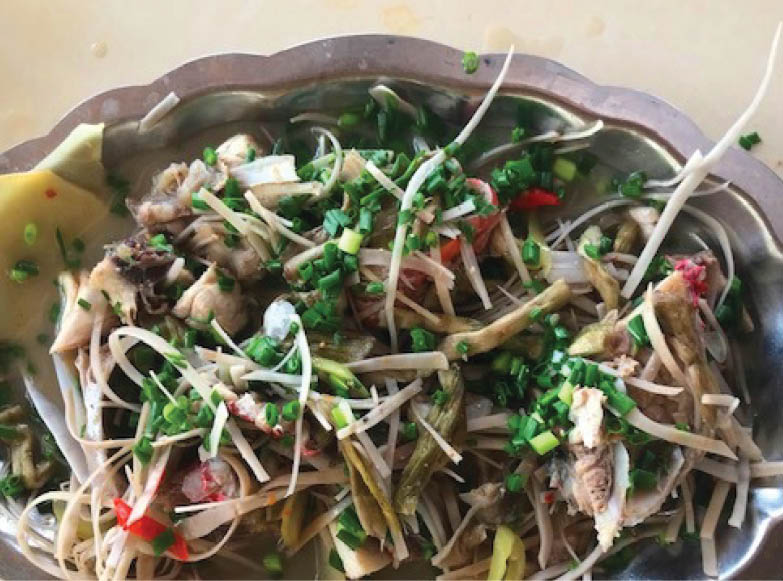
Delicious flounder braised with fermented cassava peel at Vinh An
My friends were all retirees. After busy years with work, during their first days of rest, their native place was their venue to recall their childhood memories. That was why that lunch was not exactly a meal. They took turns to tell old stories about the time when they, half-naked, exposed themselves in the sun all the day collecting fish and shells on the beach.
The stories lasted until the restaurant owner served us flounder braised with fermented cassava peel. We suddenly fell into silence for some minutes. One frowned at the plate; another was trying to recall the name and the taste of the food.
“It’s flounder braised with fermented cassava peel,” said the restaurant owner, answering all the people’s questions.
“Ah, fermented cassava peel was the main food for many families here in the past. Vinh An has white sand soil in which only cassava can grow. At the time, people ate cassava instead of rice and that was why they had lots of peel to ferment,” said one after recognizing fermented cassava peel on the plate.
“But now it’s a speciality,” said the restaurant owner. “Sure, fermented cassava peel braised with flounder is certainly different from stir-fried fermented cassava peel, or cooked with small fish,” said one.
I tried a bite. The sour and fatty taste of cassava peel combined with the sweet taste of fresh fish drove away the fishy smell, creating a different flavor. I took the chance to ask the restaurant owner for the recipe. It was actually not very difficult to make.
Fermented cassava peel is made of the thick peel just under the skin of cassava. To get the peel, first cut cassava into 7-8-centimeter-long logs. Make a line along the log with a knife. Then take off the peel and cut it into lines. Soak it in rice water for 1-2 hours to get rid of the sap and the bitter taste in it. Wash it clean, then soak it again in light brine for 2-3 days. Remember to flood it so that it will not get stained.
It is true that “travel broadens the mind.” In the difficult time of the past, we ate more cassava than rice. We often stir-fried cassava with sugar or steamed cassava, but we knew nothing about fermented cassava peel. Now that I had a chance to enjoy a new dish, heard many stories and learnt many interesting things about a far-away countryside, I realize that life is full of things I do not know and need to learn.
Not many people in Vinh An now grow cassava or steam cassava at home. So they do not have peel to ferment. But according to the restaurant owner, some families always have fermented cassava peel at home to make sour soup, to braise with fish or to stir-fry with meat.
Flounder braised with fermented cassava peel is now a speciality not because flounder is rare in the market, but because it is cooked with fermented cassava peel. The tip is how to regulate the spices because fermented cassava peel itself is rather salty.
Braise flounder until it gets boiled then add in fermented cassava peel which has been stir-fried before. Wait for about 5 minutes so that the ingredients absorb the spices. Flounder is then displayed on a plate. Sprinkle some pepper on it and decorate the food with scallions.
Because life now is much better, I thought cassava peel is a throw-away thing. But with their creativity, people in Vinh An know how to turn a common dish into a specialty, and none of us that day denied its originality.
Story and photo: HUONG LAN